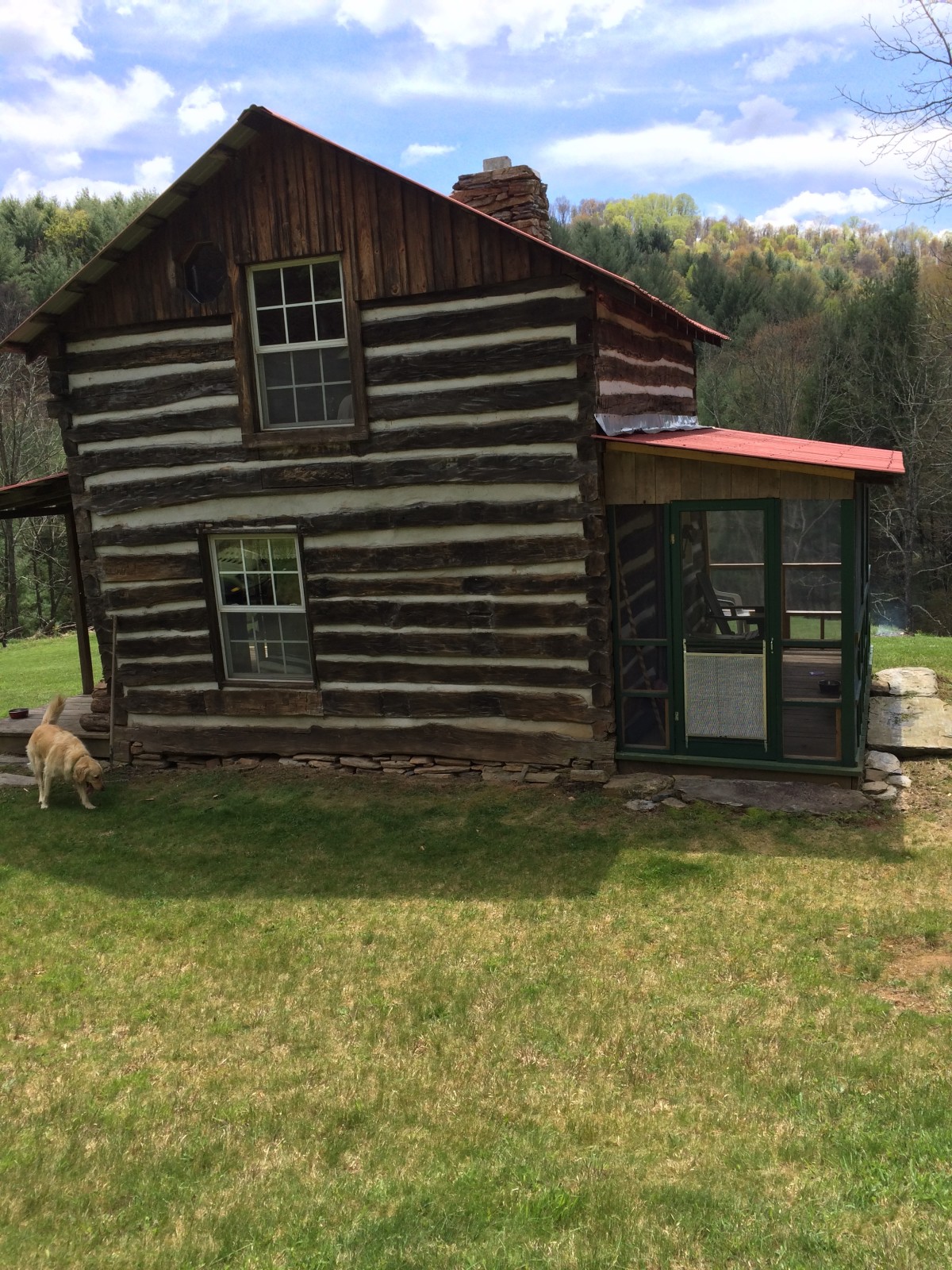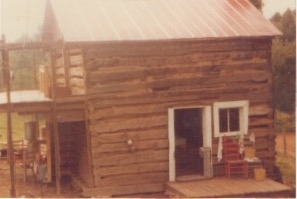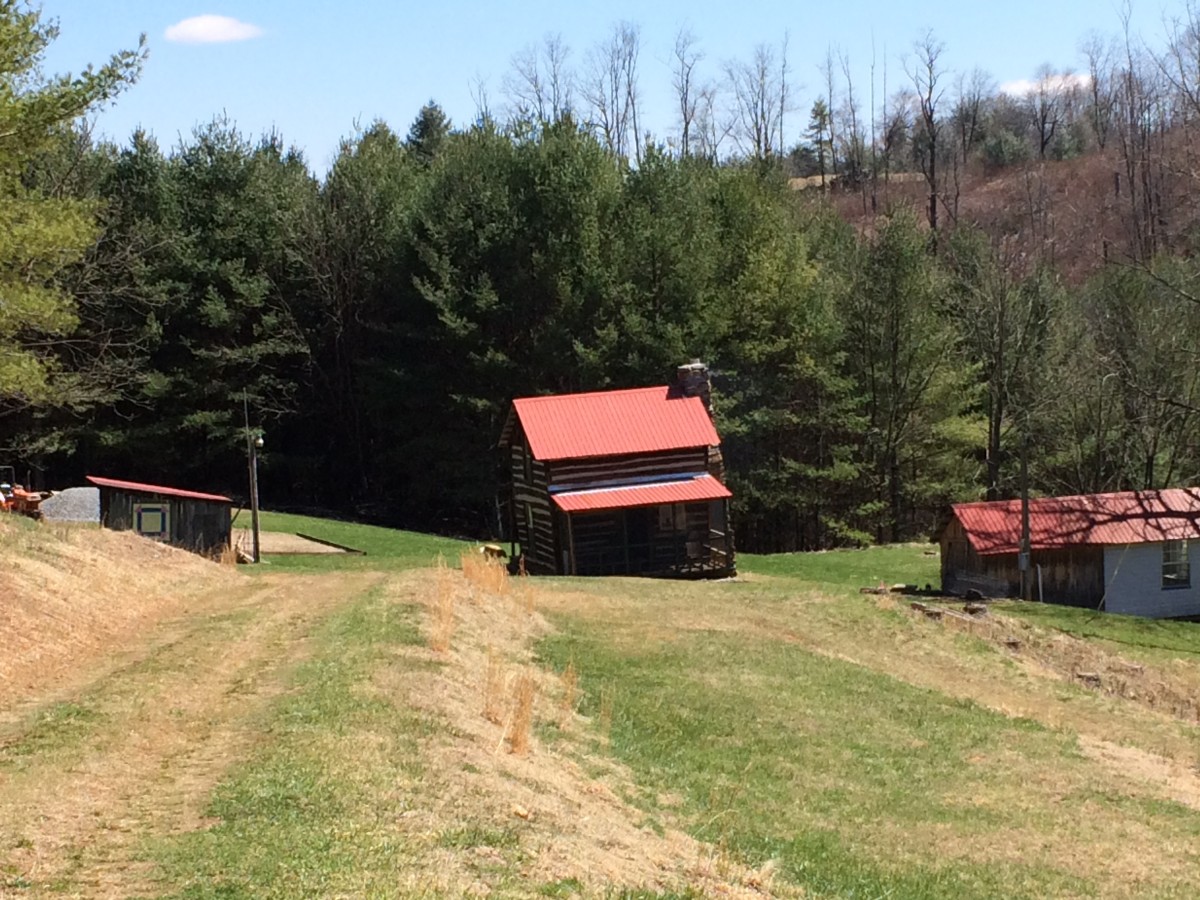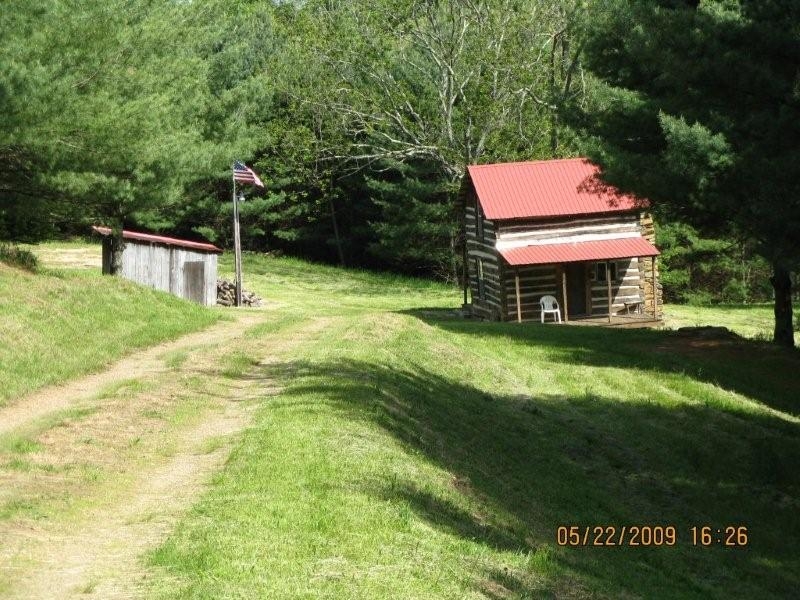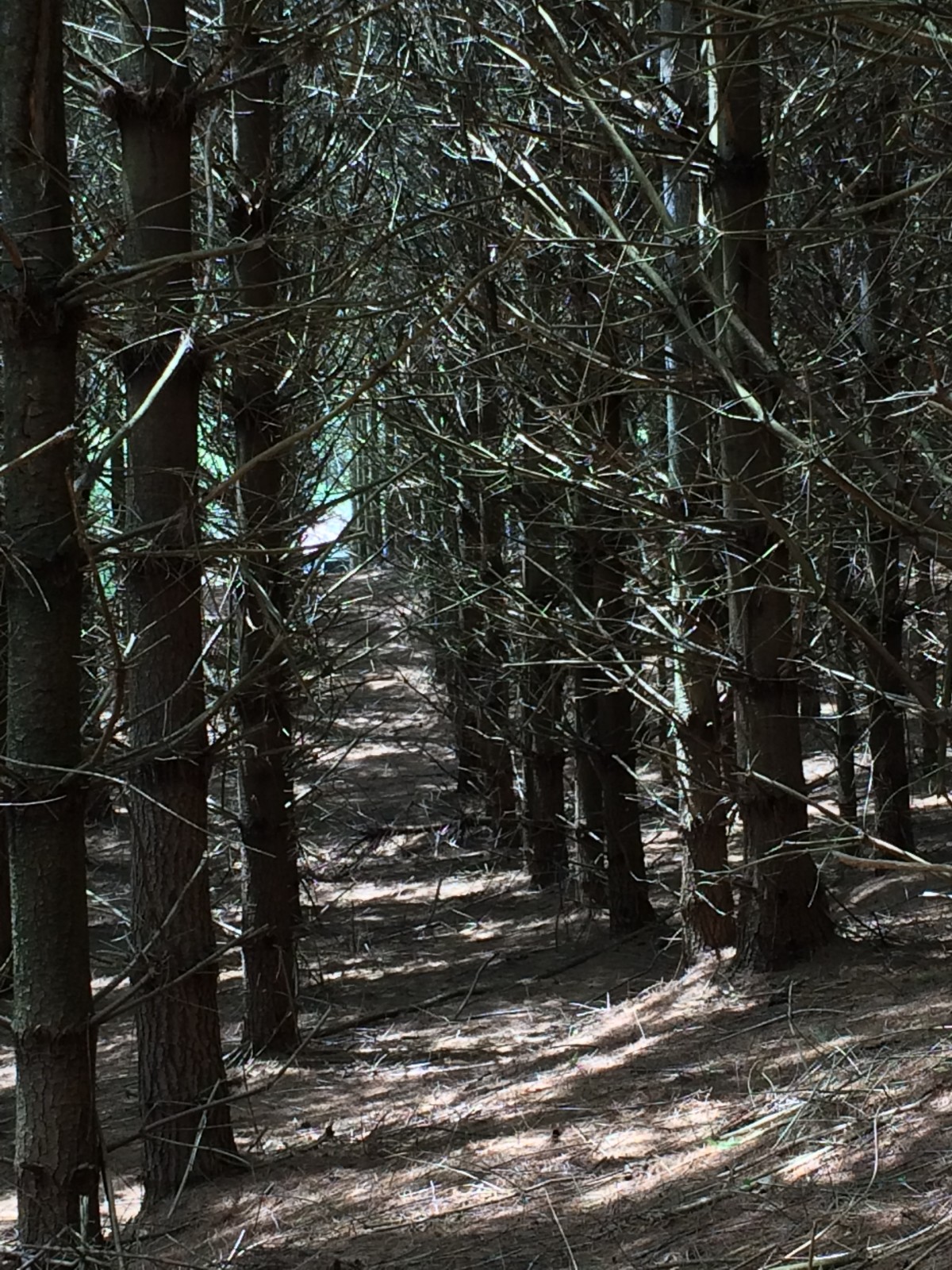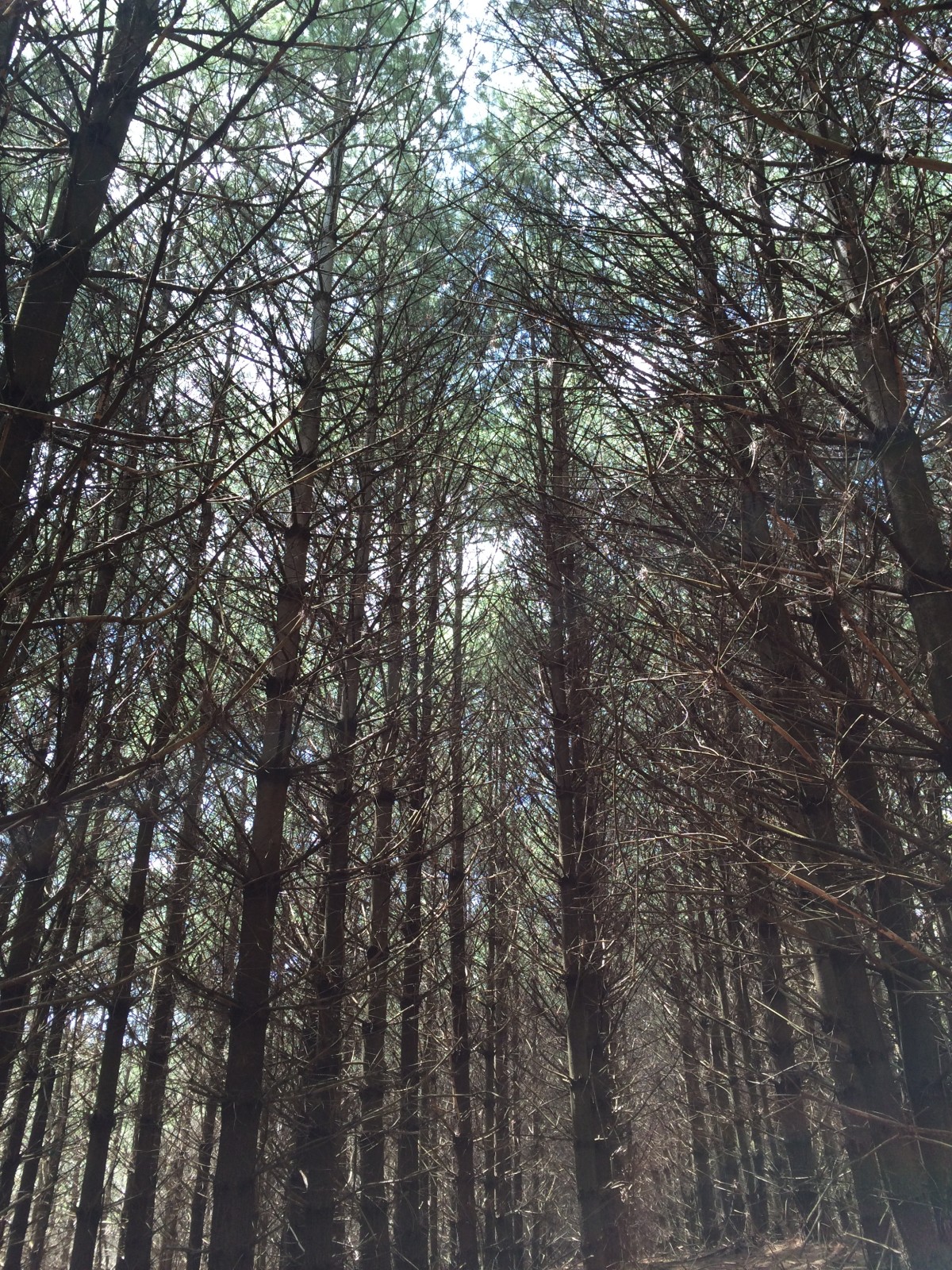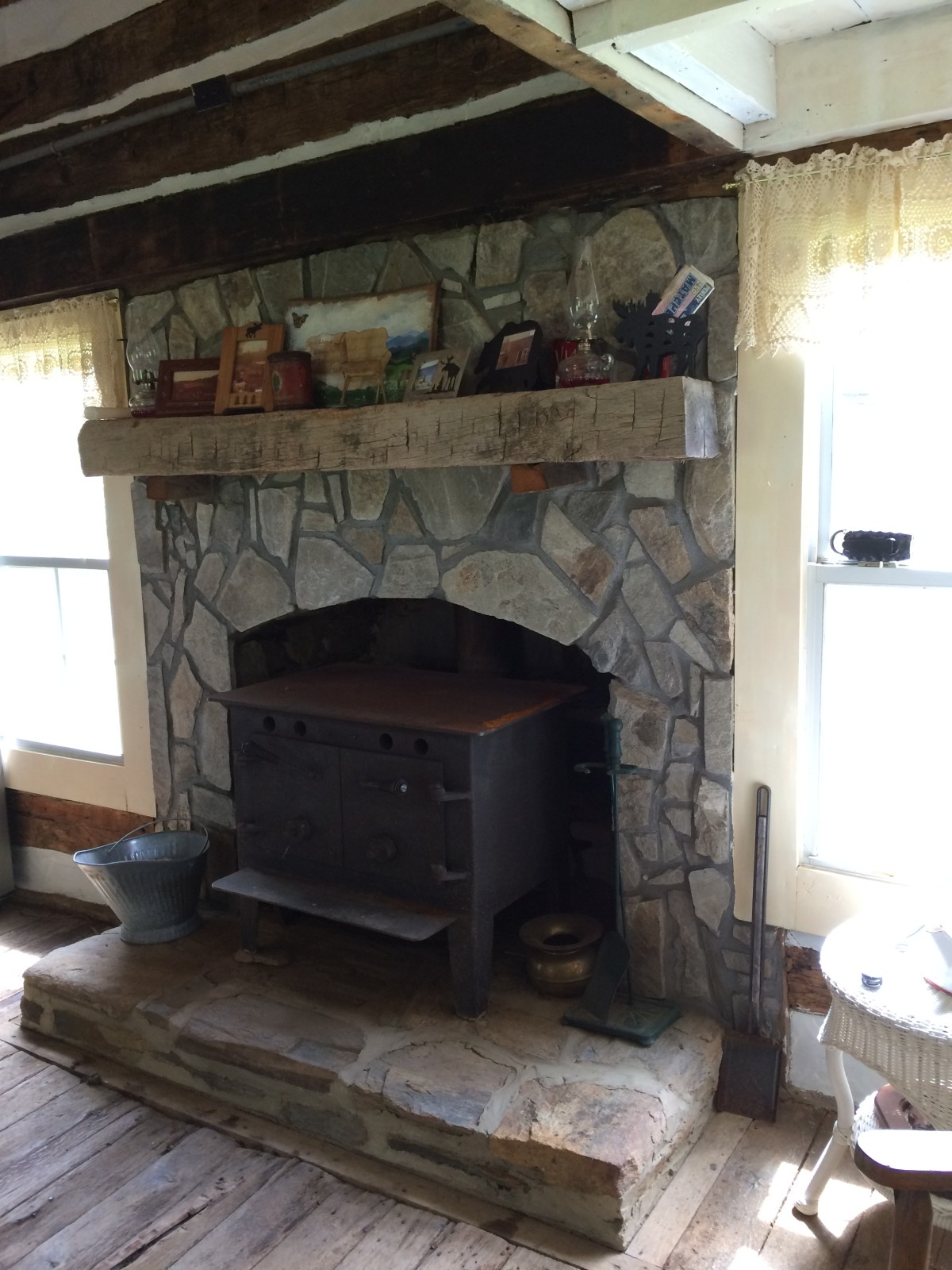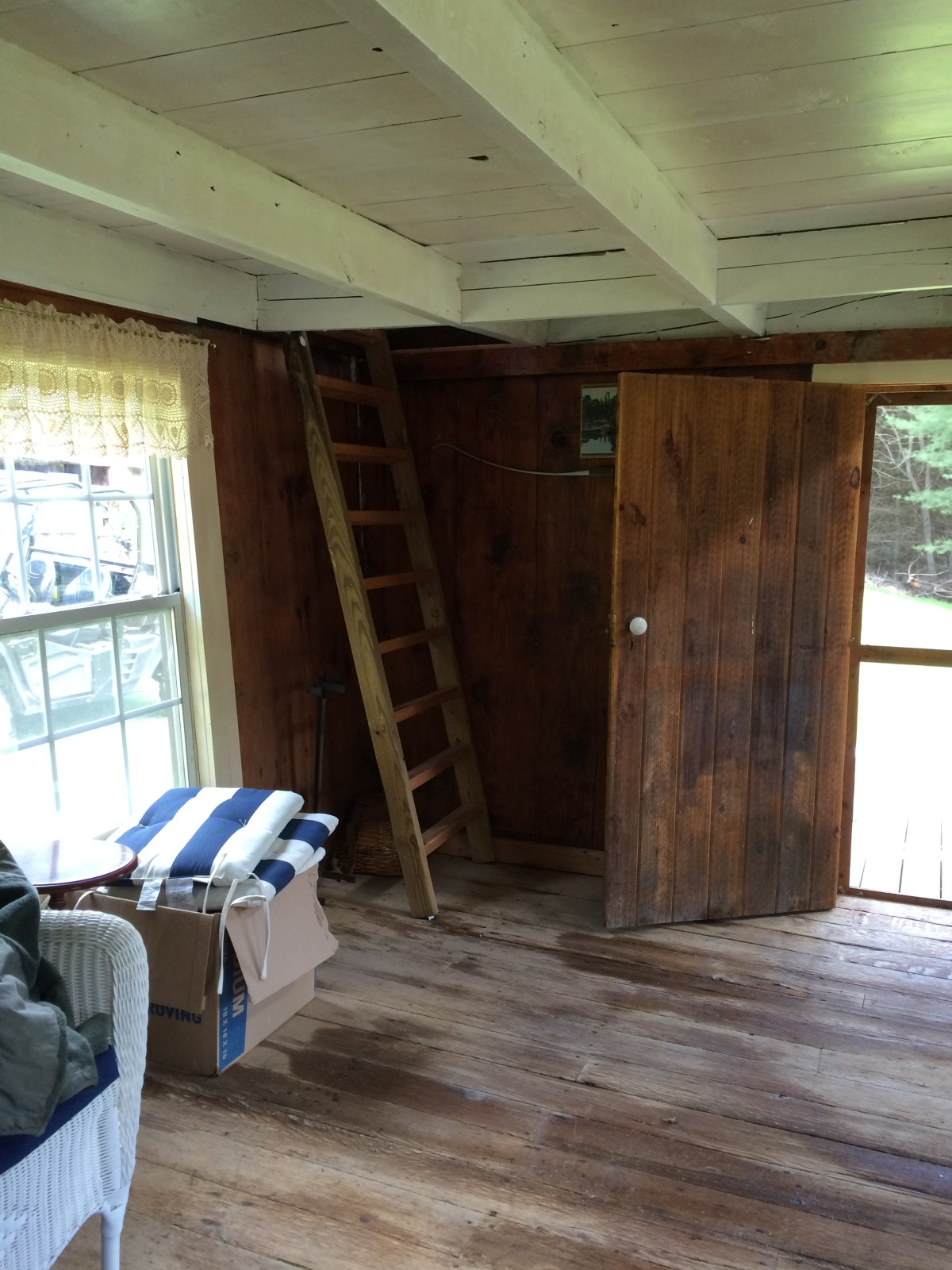
This cabin belongs to my husband and his family. It has been officially dated circa 1830s. This cabin was on the property the family purchased back in the 1970s and looks very different than it did in those days. Today is stands after some serious revival work that the family began to save as much as they could and preserve it for years to come. I think they succeeded pretty well.

These older photos give us a glimpse into the cabin as it existed when they bought it. It had been originally the two room structure of logs with chinking. Then as the family grew, the owners added an additional two rooms. That addition was removed and the family began to have the foundation redone. New sills were placed underneath to provide support for the structure and new chinking was placed to seal it against the elements. Two porches were added both front and back.

This distant view offers a shock to the system when you see the cabin from the same vantage point today. There were pines on the ridge to the right but there was an incredible view from the road to all the mountains and hillsides beyond.
As you can see, the views are much different. They planted thousands of pine trees and as they have grown, so has the seclusion offered by their greenery. A walk in these pines is similar to spelunking in a cave. The trees are a true pine green with feathery needles and tall ever thickening trunks. They block out so much light from above that the give the impression of darkness underneath. The ground beneath them is covered with a brown carpet of pine needles making the ground feel soft as you go. How many books have I read that describe the wind through the pines as a “whisper”. And it is just such a sound when it blows softly through their branches. At night when the moon shines, the needles take on a gray tint, an almost silver appearance and the darkness underneath appears almost solid. Deer, turkey, and bear walk among them–the pines seemingly providing them with a safe secure place to forage and to rest–far from view. Looking up from beneath their spires is an impressive site.
This cabin dating back to those early 1800s housed several families. One early family by the name of Ward is recorded as having owned the property according to tax records of the time period. K. C. Ward is buried on a hilltop in a field behind the cabin. His grave site has been verified by researchers recording these burial places for the mountain area.
Imagine living in this cabin without water or heat. The rock chimney built as the cabin was by hand. The fields at that time surrounding the house site used to grow crops and pasture livestock. Children were born here and patriarchs died here. We have stayed here and when inside you can picture a cradle in the corner and the wood burning fireplace cooking beans and baking corn bread. It is a beautiful site and today quite full of peace and solitude. When this cabin was lived in however, there were multiple families living in other small cabins and homes within a short walk. Another cabin site lies down a path from here. Today, only the stones for the foundation and those from a collapsed chimney remain. One of the local men in the community tells of his Grandmother living there and while he visited her, he would eat the “best” fox grapes from vines growing alongside the small stream running by the cabin.
As Appalachian author John Williams writes, “It is ironic that the log house has come to have prestige in modern Appalachia, for the ‘white house’ that replaced it during the nineteenth and early twentieth centuries used materials and construction that were intended to proclaim a sharp contrast with log construction. The basic elements of the house remained the same. Though the white house grew larger, its shape was still rectangle with chimneys at the gables and doors and windows under the eaves, and it was still located at the foot of a hill overlooking the fields and facing the road. The log house, if left standing apart from the new one, would be used as cabins had once been, for storage or for chickens, until at last it became too derelict to allow children to play in it and the caved-in roof and other debris were hauled away. Who could imagine in 1900 that the log house if care for and maintained, would one day be worth two or three times the house that replaced it.” (Williams, J. 2002. Appalachia: A History. The University of North Carolina Press. Chapel Hill. p. 106)
Williams is correct in describing the most recent generation’s obsession with log homes in this part of the country. However, today they are often located high on a hillside or on the side of a ridge, in very plain view. In my heart of hearts, I have watched these new homes going up with a good bit of sorrow. These homes–many of them grand indeed–have breathtaking views to be sure! But they are built many times by off mountain vacationers and landowners who have no true appreciation for the views of these hilltops from a distance when what you see appears as an endless vista of ridge lines and rolling mountains that are so much more beautiful when there are few signs of man and their “log cabins”.
This cabin is one that would surely have met a similar fate to the one that is in ruins beyond it and many others like it if my husband’s family had not revived it and maintain it as a part of history and link to these mountains and the early settlers like K. C. Ward who lived and died caring for this one small part of the mountains. Thankfully, this one cabin will remain just that for at least the next few generations to come.
Today there is electricity in the cabin but no running water. An old spring house has been converted and added to in order to make a bath house. A ladder leads up to the bedroom upstairs as it did years ago. To stay there for a few days is “roughing it” and yet in ways a bonding experience with the Appalachian past. A cabin very much like this one was where my great grandfather was born in much the same time period as this one.
We owe a great deal to our family for preserving this treasure and piece of the past. To see and touch the handhewn logs and walk inside their walls keeps a part of those who built them alive.

